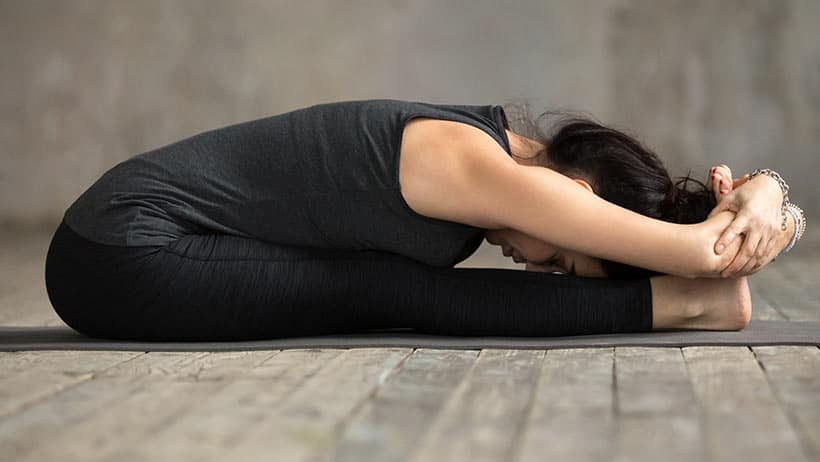
Every yoga pose, known in Sanskrit as an “asana,” has its own way of bringing the body and mind into greater harmony. World-renowned yoga teacher B.K.S. Iyengar poetically compares the body to a bow and each asana to the various arrows with which individuals target the ultimate aim of yoga practice — the soul.
This guide offers an in-depth look at intense back stretch pose (paschimottanasana).
About the Pose
पश्चिमोत्तनासन
Paschimottanasana
This pose is also known in English simply as “Seated Forward Bend.” The Sanskrit word “paschima” literally means “west” and people use it to refer to the back of the body. Paschimottanasana has a reputation for its wondrous back-stretching properties, but it also helps promote the proper function of your internal organs. While it’s a simple pose ideal for beginners, it may take a while to fully achieve. Yet, the benefits are worth the continuous effort to stretch your spine and reawaken your organs. Level: Beginner Key Benefits:
- Fully stretches the back
- Strengthens the hamstrings
- Improves digestion
- Vitalizes the reproductive system
- Massages the heart
- Relaxes the adrenal glands
- Enhances the functions of the kidney, liver, colon, and bladder
- Relieves the effects of menstruation and menopause
Specific Cautions:
- People with asthma shouldn’t practice this pose during or shortly after an asthma attack. Individuals with diarrhea should avoid this pose. Anyone with a back injury should avoid this pose or use supervision as they practice a gentler variation.
Related Poses:
- Intense Forward Stretch / Standing Forward Bend (Uttanasana): This beginner pose lengthens the spine, stimulates the digestive organs, and reduces fatigue.
- Standing Backbend Pose (Anuvittasana): This beginner pose improves circulation, tones the spine, and strengthens the abdominal muscles.
Recommended: Browse more of our guides on the art and practice of yoga to harmonize your body, mind, and soul.
Trying It Out
Remember to keep your breathing full and steady as you follow these step-by-step instructions to try this pose out for yourself:
Step One
Start in staff pose (dandasana) with your legs stretched out in front of you and pressed together gently. Press your palms down onto the floor beside your hips to lengthen your spine as you sit. Stretch your arms above your head with your palms facing each other.
Step Two
Now, stretch your arms toward your feet. Use your thumbs and the first two fingers on each hand to grab your big toes. Draw your shoulder blades closer together as you stretch in this step.
Step Three
Keep your thighs and sitz bones firmly on the floor. Each buttock should sit evenly on the floor. Stretch your feet and flex your toes. If you can, bend forward slightly to grab your right wrist with your left hand and hold them in that position against the bottoms of your feet. Widen your elbows a little at this point.
Step Four
Lift your torso and bend forward from your lower back. Beginners can rest their foreheads on a folded blanket placed on their shins. Others can attempt to place their foreheads on their knees and then push their heads toward their shins.
Step Five
Breathe in this pose for at least one minute.
Refining the Pose
Achieving maximum benefit from your yoga practice requires you to pay close attention to your physical alignment. To ensure you maintain proper alignment, ask yourself these questions:
- Is your spine concave when you practice the full stretch?
- Are your elbows off the floor?
- Are your thighs pressed firmly to the ground?
- Are your legs and feet upright and touching?
- Are your toes spread?
- Is your head level and not drooping? (Imagine something pulling your head gently toward your feet, not your knees.)
Variations:
- Upward-Facing Intense Stretch Pose (Urdhva Mukha Paschimottanasana): Also known as an upside-down version of paschimottanasana, this variation first has you lie on your back and then involves swinging your legs over your head so your toes touch the floor behind you.
- Three Parts Forward Bend Pose (Triang Mukhaikapada Paschimottanasana): This variation stretches the buttocks, knees, and feet as you bend your right leg behind you while keeping your left leg stretched out in front. Then, you bend forward to grasp your hands around the bottoms of your feet just as in paschimottanasana.